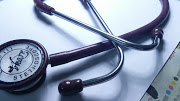INTRODUCTION
-Heart sound are the sounds produced by the mechanical activities of heart during each cardiac cycle
-Heart sounds are produced by-:
1)FLOW OF BLOOD THROUGH CARDIAC CYCLE
2)CONTRACTION OF CARDIAC CHAMBER
3)CLOSURE OF BALVES OF THE HEART
Heart sounds can be heard by placing the ear over the region of chest or by making a use of a stethoscope or microphone.
These sounds are also recorded graphically
DURING EACH CARDIAC CYCLE NUMBER OF SOUND PRODUCED ARE AS FOLLOWED .
1) FIRST HEART SOUND
2)SECOND HEART SOUND
3)THIRD HEART SOUND
4)FOURTH HEART SOUND
-First and second heart sounds are called classical heart sounds and are heard by stethoscope.
-These 2 sounds are more prominent and resembles the spoken words ‘LUB’, AND ‘DUBB’, respectively.
-Third heart sound is mild sound and it is not heard by using stethoscope in normal condition.
– Fourth heart sound is an inaudible sound.
It becomes audible in pathological conditions only.
-This sound is studied only by graphic registration.ie. the phonocardiogram
Features of the heart sound.
1)First heart sound
a) Causes-:
mainly due to closure of atrioventricular valves
b) Occurs during:-
Isometric contraction period and part of ejection period.
c) Characteristics:-
Long ,soft and low pitched
Resembles the word ‘LUBB‘
d) Duration:-
0.10 to 0.17 sec
e) Relation with ECG
Coincides with peak of ‘R’ wave
2)Second heart sound
a) Cause
Closure of semilunar valves
b) Occur during
Proto diastole and part of isometric relaxation.
c) Characteristics
Short, sharp and high pitched
Resembles the word “DUBB‘
d) Duration
0.10 to 0.14 sec
e) Relation with ECG
Precedes or appears 0.09 sec after peak of ‘T’ wave
3)Third heart sound
a) Cause
Rushing of blood into ventricle
b) Occurs during
Rapid filling phase
c) Characteristics
Low pitched
d) Duration
0.07to 0.10sec
e) Relation with ECG
Between ‘T’ wave and ‘P’ wave
4) Fourth heart sound
a) Cause
Contraction of atrial musculature
b) Occurs during
Atrial systole
c) Characteristics
Inaudible sound
d )Relation with ECG
Between ‘P’ wave and ‘Q’ wave
METHODS OF STUDY OF HEART SOUNDS
Heart sounds are studied by three methods:
1) By using stethoscope
2) By using microphone
3)By using phonocardiogram
1)BY STETHOSCOPE
Auscultation Areas
1) Mitral Area( bicuspid area)
-Mitral area is in the left 5th intercostal space at midclavicular line( about 10 cm away from the midline).
-Sound produced by the closure of mitral valve is transmitted well into thia area.
-It is also called as APEX BEAT AREA .
2) Tricuspid area
-Tricuspid area is on the left border of lower end of sternum.
-Sound produced by the closure of tricuspid valve is transmitted well into this area.
3)Pulmonary area
-Pulmonary area is on the left 2nd intercostal Space, close to the sternum.
-Sound produced by the closure of pulmonary valve is heard well on this area
4)Aortic area
-Aortic area is over the right 2nd intercostal space, close to the sternum.
-On this area ,the sound produced by the closure of aortic valve is heard well.
Note-: a) 1st heart sound is best heard in mitral and tricuspid areas.
b) 2nd heart sound is best heard in the pulmonary and aortic areas.
2) BY MICROPHONE
-A highly sensitive microphone is placed over the chest .
-The heart sounds are amplified by the means of an amplifier and heard by using a loudspeaker.
-First, second and third heart sound are heard by this method.
3) BY PHONOCARDIOGRAM
-Phonocardiography is the technique used to record the heart sound.
-Phonocardiogram is the graphical record of heart sound
-It is done by placing an electronic sound transducer over the chest.
-This transducer is connected to a recording device like polygraph.
-All the four heart sounds can be recorded in phonocardiogram.
-It helps to analyze the frequency of the second waves.
FOLLOW ME IN SOCIAL MEDIATHANK YOU.


